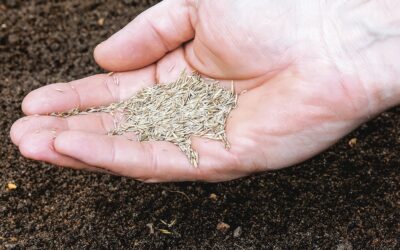The monthly Fort Worth water bill might not be the highest utility bill in your home — but it’s likely to make up around 12-15 percent of the total and the rates are about to increase.
Indeed, many North Texas residents have reported spikes in their water bills in 2023.
So, how can you save on your water bill?
The more water you use outside your home, the more your bill is likely to surprise you in the future — and not in a good way. So, that’s an obvious area to focus on. Other ways to get a handle on excessive monthly water bills are fixing leaks promptly, replacing old and inefficient household appliances, and installing low-flow shower heads. But there are more…
As Fort Worth homeowners look to keep a cap on their monthly utility bills, it’s useful to delve deeper into how to lower your water bill each month — and explore the other benefits of reducing water usage.
Here’s what you need to know:
What’s the average water bill in Fort Worth?

The average water bill in Fort Worth is around $40-80 per month. According to some sources, $40 is around the national average. The Environmental Protection Agency (EPA), however, estimates that the average family in the U.S. spends more than $1,000 per year in water costs, which translates to over $80/month.
Texan cities vary in water costs. Austin has the highest rates and Houston has the lowest. Fort Worth is somewhere in the middle of the two — but Texas as a whole fares well when compared with the most expensive states, which are West Virginia, Washington, California, Oregon, New Jersey, Connecticut, and Alaska.
The Fort Worth water utility is funded only by the rates and fees collected from home, farm, and business owners in the area. In 2024, water bills in Fort Worth are set to increase for the first time in four years (water rates by 3.5 percent and wastewater rates by 2.9 percent).
When checking your Fort Worth water bill, the first thing to understand is the four main components included (note that the rates used are the new rates for 2024):
- Water volume rates: these are tiered rates depending on the volume of water used each month, ranging from $2.27/CCF* for the first 6 CCF to $4.95 for >30 CCF (higher if your residence is outside the city limits).
- Water monthly service charge: for most Fort Worth homes this will be based on a meter size of 5/8-inch x 3/4-inch ($12.90 per month) but homes and businesses outside the city and/or with larger meters will pay more.
- Wastewater volume rates: these are the rates for treating sewage, with most residential homes charged $4.19/CCF from 2024 onwards ($5.24/CCF if you are outside the city limits).
- Wastewater monthly service charge: for most Fort Worth homes, this will be based on a meter size of 5/8-inch x 3/4-inch ($7.15 per month) but homes and businesses outside the city and/or with larger meters will pay more.
* CCF = 100 cubic feet (748.1 gallons)
What’s a typical breakdown of home water usage?

The average family in the U.S. uses more than 300 gallons of water per day. In the State of Texas as a whole, people use 76-100 gallons of water per day, which is around the national average (though it’s higher in many of the driest and hottest states).
In most of the country, around 70 percent of water usage comes from inside the home and 30 percent outside the home.
The outdoor usage percentage is, however, much higher in hotter and drier parts of the country. Parts of Texas, where homeowners need to heavily irrigate lawns and yards and people take more showers have higher per capita residential water usage.
Understanding how you’re currently using water is the key to saving on your Fort Worth water bill. Just like if you want to save money, you need to understand the incomes and outgoings before you can make cutbacks on the non-essentials.
So, where exactly is all that water usage in your home going?
For most Fort Worth homes, this estimated typical breakdown of usage will be close enough:
% of daily water usage Actual water usage
Shower 12.5% Up to 2.5 gallons per min.
Toilet 12.5% 1.28 to 5 gallons per min.
Dishwasher 7% Up to 2.5 gallons per min.
Faucets 10-20% Up to 2.5 gallons per min.
Washing machine 8% 14 to 45 gallons per load
Sprinkler system 40-50% Up to 15 gallons per min. per zone
Without a sprinkler system or a grass-based yard, the percentage for indoor usage will be higher and outdoor usage much lower. More about this below.
How can you lower your water bill in Fort Worth?
If you want to lower your Fort Worth water bill, the following areas should provide the quickest and biggest gains in saving water:
Replace your grass lawn with artificial grass

Yes, we’re an artificial grass company. No surprise that this comes first on the list. But the numbers do bear us out here.
Most homes with grass-based yards in the DFW area spend around 40-50 percent of their monthly water usage on outside-the-home activities (more in summer). Dallas Water Utilities recommends steps to conserve water primarily outside the home.
Our outdoor water usage seems even more wasteful if we consider that as much as 50 percent of the water used is lost due to wind, evaporation, and runoff caused by inefficient irrigation methods/systems.
So, the irrigation system is the “elephant in the room” with water bills. It has to be the first place to look if you want to save water.
An average-sized grass lawn watered for 20 minutes a day for seven days uses the same volume of water as running the shower constantly for four days or taking more than 800 showers.
You instantly cut water usage drastically by switching to an artificial turf lawn and, while the upfront costs of artificial grass are higher, the switch pays for itself in full after around five years. So, every year after that, you’re in profit!
We break down the estimated cost savings of artificial grass over natural grass lawns here.
Besides the water-saving and long-term cost benefits of artificial lawns, there are other major benefits: your lawn will look immaculate all year round with very little maintenance and the latest and greatest artificial grass is built to last 15-20 years or more, even with high traffic.
Fix leaks around the home

Leaks can be a killer for a monthly water bill and are a major reason for unexpected hikes in bills. Yet, one in 10 homes is estimated by the EPA to have leaks that waste 90 gallons or more of water per day!
Other estimates from the EPA suggest that the average family can waste 180 gallons per week, or 9,400 gallons of water per year, from household leaks (that’s equivalent to 300 loads of laundry).
Water leaks are often silent and go unnoticed until the monthly bill arrives. To check for leaks, read your water meter, switch the water off for one or two hours, and then read the meter again. If the meter does not read the same, you’ll need to troubleshoot because you have a leak.
A good way to determine if your toilet is leaking is to add a few drops of food coloring to the tank. If the bowl changes color after 10 minutes, you are wasting water with a leak.
The following estimated water loss from various appliances inside and outside of the home show how important it is to repair leaks promptly:
- Sprinkler head: if broken, it can leak up to 20 gallons of water per minute.
- Shower head: a dripping shower head can waste up to 500 gallons of water per year.
- Toilet: a broken toilet flapper may use 8 gallons of water per hour.
- Faucets: fast-leaking faucets can waste up to 3,000 gallons per year.
Swap old appliances for new, water-efficient models

Dishwashers, washing machines, and faucets installed 20 years ago are likely to use considerably more water than newer models. This is another area to make significant savings on your Fort Worth water bill.
The EPA’s WaterSense campaign labels products and appliances that meet its water-efficiency and performance criteria. These products are backed by independent, third-party certification. Typically, these products are 20 percent more water-efficient and perform as well as or better than standard models.

For instance, replacing an old toilet with a WaterSense model can save 13,000 gallons of water per year for the average family (that’s up to $140 less on water bills).
Other home appliances to check for water efficiency are:
- Dishwashers
- Washing machines
- Bathroom and kitchen sink faucets
- Showerheads
The upfront investment in new WaterSense appliances will be paid back over the years by lower water bills. If you install multiple water-efficient and energy-efficient appliances (look for Energy Star-certified washers and dishwashers to save on electricity), the investment can potentially pay for itself within as little as one year.
Upgrade your irrigation system and/or change your watering habits

Not yet ready to rip up your precious grass lawn and replace it with artificial turf?
Some homeowners get attached to their grass. If you’re one of them, consider the water-saving benefits of replacing a clock-based controller with a WaterSense-labeled irrigation controller.
If you decide to do this, ensure you hire a professional certified by a WaterSense-labeled irrigation program to install the new system.
Upgrading and maintaining your new sprinkler system could reduce your home’s irrigation water use by 15 to 30 percent. That could amount to 7,500 to 15,000 gallons of water or more shaved off your Fort Worth water bill every year.
Simply complying with the year-round outdoor watering requirements in Fort Worth will also help you reduce water bills:
- No watering by irrigation systems or sprinklers between 10 a.m.-6 p.m. (watering by hand-held hose, drip irrigation or soaker hose is allowed at any time).
- Twice-a-week irrigation system or sprinkler schedule according to assigned days.
- No watering hard surfaces.
- No watering during precipitation.
- No water waste through runoff or damaged/incorrectly installed sprinkler heads.
- No sprinkler systems watering driveways, sidewalks or streets.

Fort Worth also offers some advice to further reduce water usage by reducing the number of times you water your yard:
- Winter: Every 15 to 20 days (if any water is needed at all, turn the system off and operate manually)
- Spring: Every 10 to 15 days
- Summer: Every 5 to 7 days
- Fall: Every 10 to 15 days
Try letting the lawn grow a little longer as this will reduce the amount of water it needs. Also, use a broom rather than a hose to clean sidewalks and driveways and plant native and/or drought-tolerant grasses, shrubs, and trees that require less water.
Finally, consider collecting the rain in a rain barrel attached to your home’s downspout. This will capture roof runoff that can be used for watering.
Take shorter, lower-pressure showers

This might be met with some groans from those who love their never-ending morning showers but shorter, lower-pressure showers can save a lot of water.
This will require education and compliance from family members but if you can all follow the rules, you can shave a significant amount off the monthly water bill.
The average shower uses roughly 17 gallons of water and lasts for around eight minutes. Each minute you shorten your shower, therefore, saves over two gallons of water.
Replacing showerheads with WaterSense labeled models can also reduce the average family’s water usage, potentially saving over 2,700 gallons of water per year (equal to 88 loads of laundry!)
Another way to save water when showering is to turn the water on only when you need it to get wet and wash off — not while soaping, shampooing or conditioning. That strategy won’t be for everybody but it will save water.
Be more conscious of appliance and faucet usage

Around 68 percent of American households have a dishwasher. If you run this appliance only when it’s full and are more aware of when the taps are on in the home can result in considerably less water usage.
Running the dishwasher only when the load is full will save one or two loads of dishes per week, which equates to hundreds or even thousands of gallons of water annually.
Still, dishwashers use less water than washing dishes manually. The average (non-Energy Star) dishwasher uses around six gallons per cycle. If water usually flows from the faucet at a rate of two gallons per minute and it takes you more than three minutes to wash your dishes, you’ll save water by using the dishwasher.
Dishwashers, of course, use electricity too but, overall, it may still be better to switch to a dishwasher. If you have one but don’t use it (like many homes), it may be time to start unlocking the water-saving benefits.
Also, do you need to run the bathroom faucet when brushing your teeth, washing your face or shaving? That’s unnecessary for most people as is full flushing of the toilet every time it’s used.
Flushing the toilet unnecessarily also wastes water. How about disposing of tissue in a small trash can instead of flushing it?

To reduce the amount of water going down the drain per flush, you can add a small plastic bottle or two (filled with sand or pebbles) to the toilet tank. The bottles take up space that would otherwise be refilled with water after each flush. Just make sure that the bottles do not interfere with the flushing mechanism.
If you can educate your family about controlling water usage, it could save 15 to 25 gallons of water per day or more without causing any hardship at all. This adds up over a month and, combined with the other water-saving methods, can lower water bills.
Last tips tip for homes with fish tanks and swimming pools…

If your home has a fish tank, don’t waste the water when you change it. It can be recycled in the yard for watering the plants. Fish emulsion is an effective, inexpensive fertilizer that’s high in nitrogen and phosphorus: that’s great for plants.
Finally, if you have a swimming pool, like many homes in Fort Worth, make sure that it’s covered when not in use, which will reduce evaporation. Also, install a water-saving pool filter.
Other benefits of reducing water usage in Texas
Reducing water usage in your Fort Worth home reduces your monthly water bills. This is a pretty simple equation. But other elements of the water usage equation have less immediate or less tangible benefits…
Water restrictions and our water future in DFW and Texas

The past summer saw many areas in Texas introduce or continue strict water restriction rules, including the Fort Worth area.
City and state governments are concerned about the water future of Texas and are taking measures now to protect this most precious of resources.
The state government has issued advice on water-saving measures for residents and city ordinances aim to control water usage as much as possible. Plans to expand the infrastructure providing our water supply are also in place.
In the Dallas area, for instance, the number of lakes and reservoirs under the control of Dallas Water Utilities is set to expand to accommodate the water needs of the rising population.
North Texas has been called the fastest-growing region in the country. In some counties, populations are projected to double between now and 2060. If the average water usage per person increases any further, this is a recipe for disaster.
Water rates on the rise

More people wanting access to the same limited amount of water means the possibility of water shortages, increased water restrictions, and higher rates.
This spells bad news for Fort Worth homeowners and their monthly water bills — unless they start acting to reduce the amount of water they use.
As more infrastructure is required, someone’s got to pay for it. Water utilities in Fort Worth are completely funded by rates paid by customers. Any extra costs, therefore, ultimately get passed on. That means you, me, and your neighbors pay for it on your monthly water bills.
Droughts across Texas
The poor water situation in much of Texas is exacerbated by widespread drought — and not just in the extreme west of the state. This map shows drought-stricken areas of Texas as of November 2023:

Besides natural causes, drought can be caused by an imbalance in water supply and demand. The well-documented regional population booms in parts of Texas, combined with intensive agricultural water use have placed a strain on water resources and increased the likelihood of drought.
One study estimates that between 1960 and 2010, the natural consumption of water, specifically from humans, increased the frequency of drought in North America by 25 percent.
The Natural Resources Defense Council (NRDC) forecasts long droughts interrupted by short bursts of heavy rainfall in the future. This could worsen water shortages and reduce reservoir levels, increasing the need to save water in the home to prevent health problems and the environment around us from suffering.

Taking steps now to send less water down the drain benefits us by preparing our homes for the future, when it may become a necessity to do so.
Ready to switch to artificial grass?
Installing artificial grass can be the first step to saving on your Fort Worth water bill — while also helping the wider water situation in Texas.
Remember, a synthetic grass lawn needs no watering or other maintenance to keep it looking pristine all year round. You can save thousands of gallons of water, hundreds or even thousands of dollars per year, and never have to worry about Fort Worth’s outdoor watering restrictions again.
Talk to an artificial grass professional at DFW Turf Solutions in Dallas to discuss your options.






